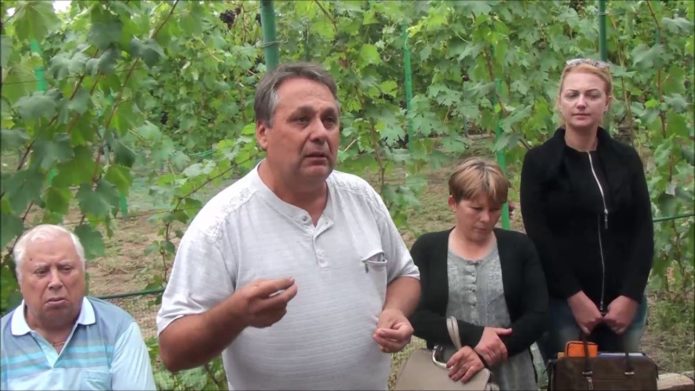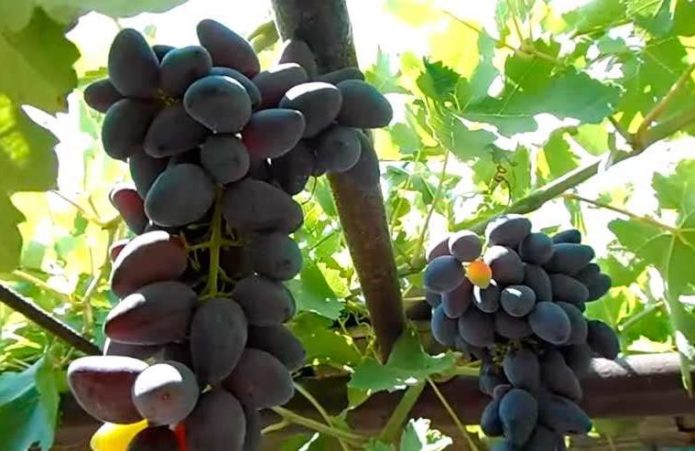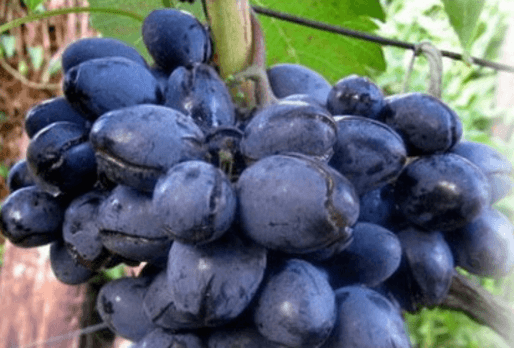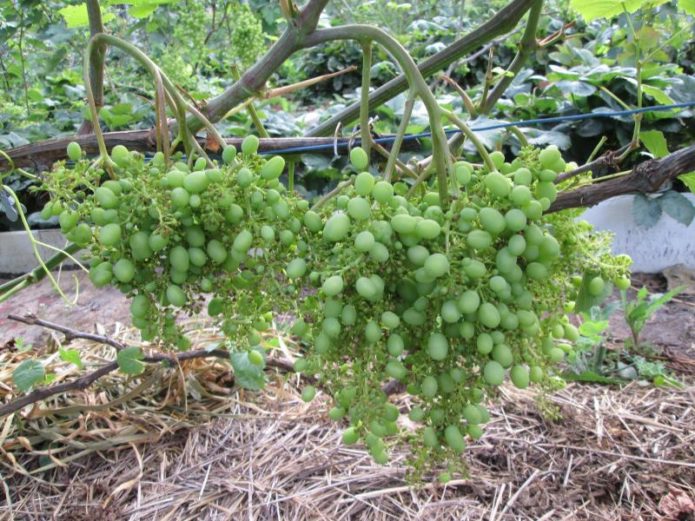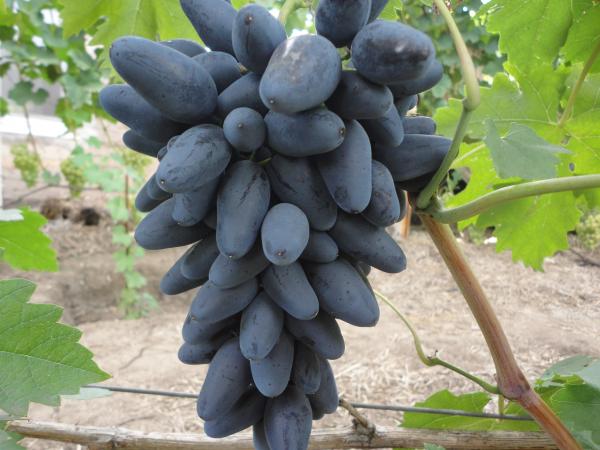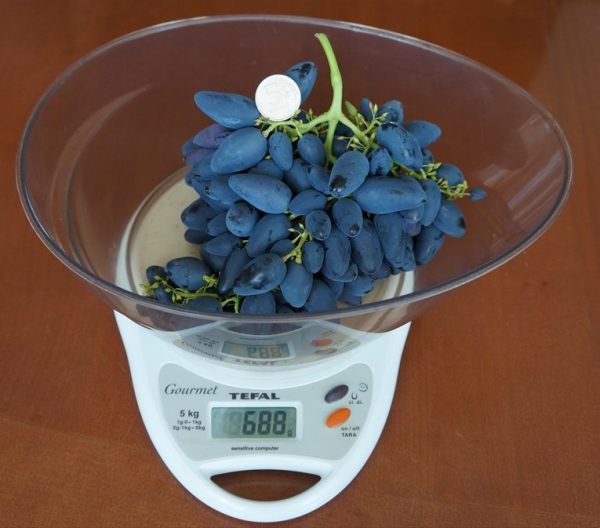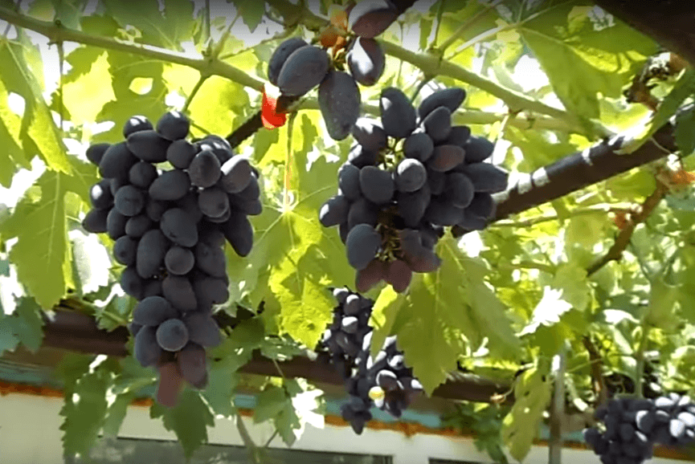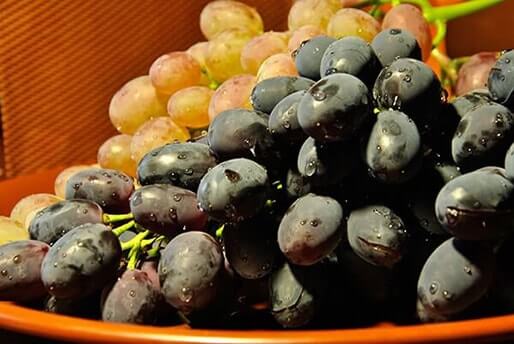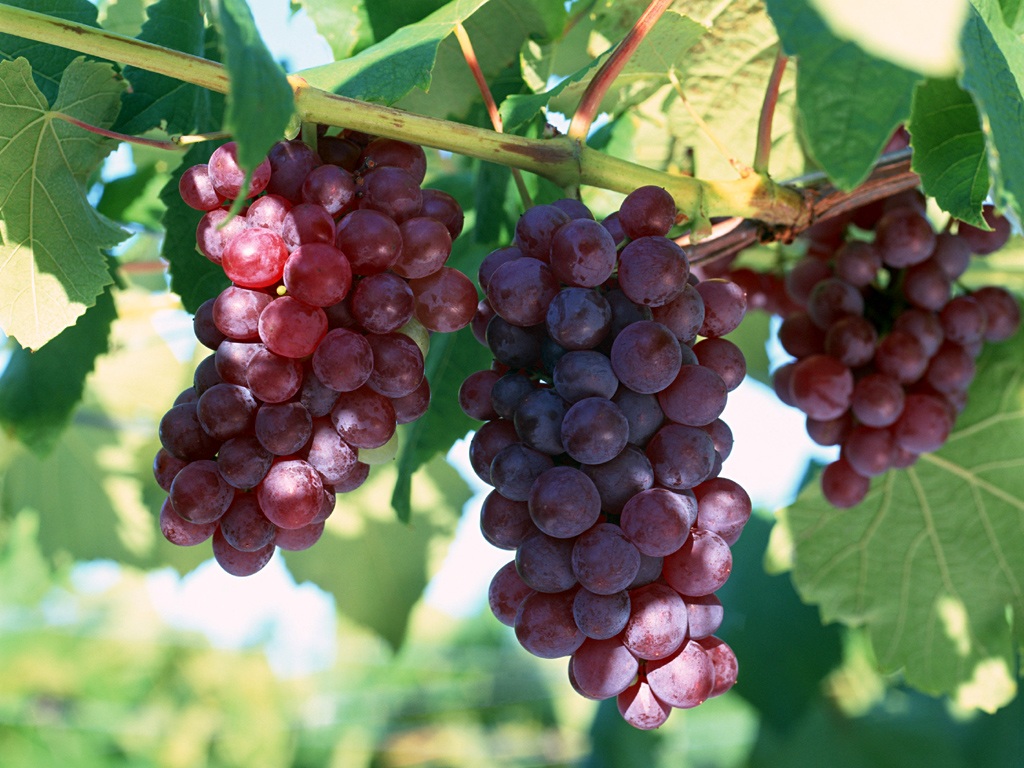The Viking grape has garnered the most controversial reviews. Its superior qualities compete with serious disadvantages. One thing is clear - this hybrid is not for industrial cultivation and, most likely, not for beginners. Viking is designed for the professional amateur, which is exactly what its creator is.
Content
Origin, history of cultivation of the hybrid Viking form
Viking is a hybrid of folk selection. The author of the form is the Ukrainian winegrower V.V. Zagorulko. Vitaliy Vladimirovich conducts work on breeding and variety testing on his own plot in Zaporozhye. He became famous thanks to breeding forms: Libya, Lily of the Valley, Bazhena, Ruslan, Veles, Sofia and Mavr, which in 2009–2011. won prizes at international exhibitions.
During the ripening season of selection varieties and hybrids, excursions and tastings are held in the Zagorulko vineyard. The author communicates with guests, gives interviews, talks about his experience. Here you can buy seedlings and cuttings, as they say, first-hand, and even get professional advice.
Video: in the vineyard Zagorulko V.V. (author of the Viking hybrid)
A website has been created where the national breeder personally describes his forms, including the Viking. DIbrid was obtained by crossing ZOS 1 (Red Delight) and Codryanka. Unlike Libya of the same authorship, which relatively recently entered the Russian state register of breeding achievements, Viking variety trials in the Russian Federation did not pass. Perhaps his time has not yet come. However, the hybrid has been tested for many years on household and farm plots in Ukraine and Russia.
The Libya grape is one of the best varieties of the very early ripening period:https://flowers.bigbadmole.com/en/yagody/vinograd/vinograd-liviya-opisanie-sorta-foto-otzyvy.html
There are winegrowers who have been growing this form for more than seven years and are happy, others, after three years of dating, get rid of it. The reason is the uniqueness of the climatic conditions of each growing region. Viking's ultra-early maturity is a lure for gardeners in the middle lane and the North. However, with a lack of heat, the berries do not gain the required amount of sugars, and in rainy summer they crack.
In the South there is enough sun, ripe grapes acquire a caramel flavor. However, there is a sharp rise in temperatures during the flowering of the vines. The Viking has a gene for Amur grapes, so in extreme heat, pollination is disturbed, which leads to peas. This happens especially often with three-year-old bushes.
The conditions of his native Zaporozhye are ideal for a Viking: mild winters, warm and dry summers. It has proven itself well in all regions of Ukraine. In other territories, the Viking often deserves criticism from its owners and not every year pleases with a good harvest. Nevertheless, experienced growers who grow several varieties and hybrids on their plots gladly include it in their collections. Viking is one of the few forms characterized by such an early ripening of large black grapes, and the taste of berries makes you forget about all its shortcomings.
Video: Viking signal clusters (southern Ukraine)
Description of Viking grapes
The period from budding to harvesting at the Viking lasts only 100-115 days. Its own rooted form is distinguished by its great vigor of growth, that is, the bushes grow powerful, the shoots are long (more than 2.5 m), almost completely mature over the summer. The leaves are large, five-lobed. The bunches look like a cone, the average weight is 700 g, rarely up to 1 kg. The berries are located loosely to each other, large (35x23 mm), of an interesting shape - elongated with a pointed tip.
The color of Viking grapes is dark blue. The skin is not felt when eaten. The pulp is dense and juicy, the taste is dessert with an unusual bouquet of aromas, there are notes of Hungarian plum, cherry, and prune in it. The grapes have an excellent presentation, but due to their low yield, they did not fall into the commercial category. Underloading of the bush is often observed.
Thanks to its ultra-early maturity, the Viking successfully gets away from mildew (downy mildew), the disease is no longer terrible for ripening berries. Resistance to powdery mildew is average. In the conditions of Zaporozhye, with pronounced dry winds, the harvest ripens in late July - early August and hangs on the vines until September. The berries do not crack, but dries up, turning into raisins.
Diseases and pests of grapes, how to recognize symptoms and choose a treatment:https://flowers.bigbadmole.com/en/yagody/vinograd/bolezni-vinograda-opisanie-s-fotografiyami-i-sposobyi-lecheniya.html
Video: fruiting of a 3-year-old Viking bush (Kharkiv region)
Advantages and disadvantages of a hybrid (table)
| Benefits | disadvantages |
| Early | Low yield on the background of a powerful bush |
| Beautiful presentation of berries | Requires a lot of space on the site |
| Sweet and multifaceted taste | Berries crack in humid climates |
| Prone to peas | |
| Many nuances in care |
How to plant Viking grapes
Gardeners with successful experience in growing a Viking say: the less you look after him, the better the harvest. The only thing that needs to be provided for this hybrid in sufficient volume is space. Optimal grape planting scheme This variety is at least 2.5x3 m. The type of growth is well suited for landscaping arches and arbors, but for the winter the vines need to be laid on the ground and covered.
The pits will require impressive - 80x80x80 cm.The landing is classic:
- Lay drainage from broken brick, crushed stone, expanded clay, pieces of thick branches at the bottom.
- Pour a humus slide under the heel of the seedling.
- Embed the shank to the first branch, with a slope in the direction where you plan to lay in the fall for shelter.
- Fill the hole with soil from the site, mixed with loosening material 1: 1, for example, peat or compost. Add a glass of wood ash to each bucket of mixture.
- Water the seedling well, mulch the holes.
Video: features of planting self-rooted and grafted seedlings
The nuances of Viking care
All the features of cultivation are associated with a powerful growth of shoots to the detriment of laying fruit buds. It is necessary by all means to prevent the Viking from fattening and to make him bear fruit. To do this, contrary to the traditional methods of caring for grapes, do the following:
- Water in moderation. Skip the first spring watering, the Viking will have enough winter moisture remaining in the soil.Avoid constant drip irrigation. It is best to keep the soil always under mulch. It is enough to water such an early variety three times per season: in June, early July and autumn, before sheltering for the winter. Otherwise, you will end up with a lot of greens and few small berries.
- Feed with compound fertilizers. Minimize nitrogen fertilization. It is enough in the fall or spring to mulch the ground under the bushes with humus. However, the bouquet of aromas and flavors in Viking berries is created thanks to trace elements. Use ready-made mixtures containing them: Florovit, Novofert, etc. Feeding with ash is welcome. Three dressings are enough for the whole season. Combine the first two with watering (June and July), add the third after harvest.
- Form bushes with long vines - 12-15 eyes. A lot of fruitful shoots on one sleeve contributes to the redistribution of juices: the vine does not fatten, it grows thinner, flower buds are more actively laid. Optimal formations for the Viking: fan, cordon or arbor, when a long horizontal sleeve is left, and shoots on it are allowed to run along the trellises. Another nuance is pinching the tops before flowering. Again, you will reorient the bush from the formation of greenery to the setting and ripening of berries. With regard to yield rationing, this hybrid is almost always underutilized. In the first years of fruiting, leave 2-3 inflorescences on the shoot, in subsequent years more can be.
- Protect from diseases and pests like any other grape. The short growing season allows you to reduce the number of treatments to a minimum: in the spring before bud break or on a green cone and in the fall after harvest. In the fight against fungal diseases (oidium, mildew), you can use well-known fungicides: Bordeaux liquid, HOM, Skor, etc. At the same time, treat with insecticides of a wide spectrum of action from a complex of pests: Karbofos, Aktara, etc.
- Cover for the winter. Viking safely tolerates frosts down to -22 ⁰C, but even in Zaporozhye it is rare, but it is colder. In addition, ice rains are terrible for grapes, which come at sub-zero temperatures and cover the vines remaining on the trellises with a thick layer of ice. Why risk a Viking's health and productivity again? After the leaves fall, cover the ground under the bushes with dry mulch. Remove the vines from the supports, cut them off, and lay them on the ground. In regions with a large snow cover, this is sufficient. If there is little snow in your area, there are thaws, then cover the shoots with reeds, cardboard, agrofibre. Place arcs on top and stretch the film so that no water gets into the shelter. You can build a wooden box and cover it with slate sheets.
Video: an original way of forming grapes - a very long vine with a dug
You can get a high yield of grapes only with careful care, one of the components of which is the mandatory application of fertilizers:https://flowers.bigbadmole.com/en/yagody/vinograd/chem-podkormit-vinograd-osenyu.html
Viking grape harvest and use
Viking ripens in the vineyards one of the first. Of course, the berries are eaten fresh. They are well stored and transported, attractive to buyers in the market, but this hybrid cannot earn much capital. In arid regions, clusters can remain on the bushes for a month and gain sugars, that is, you can pick as many berries as you need, you do not have to cut and process everything at once. And vice versa: if it rains often, the ground is damp, then harvest the crop as soon as it is ripe. Viking can be used in winemaking for blending, that is, it can be mixed with nutmeg varieties to give the drink a brighter color and rich taste.
Reviews of the Viking hybrid form
This year was the first signal brush of the Viking, in terms of ripening it is inferior to Codryanka, and even the berries burst on the Viking.
The first two Viking fruiting suits me very well.I was going to increase the number of bushes (now I still have 3 of them). Fruiting last year alarmed. Abundant peas and a sea of tops. I tried a longer pruning this year, left all the inflorescences, especially since the bushes fell under the spring frost. But the results have not improved. I plan to give the form one last chance next year + I will observe the first fruiting of my seedlings with a friend. In terms of ripening, I do not notice a difference with Codryanka (and in the description of Vitaly Vladimirovich the difference is only 3 days). I think that the load, the age of the bushes, etc., affects more.
Last summer I re-grafted two bushes of Alina Zaporozhskaya on Viking town. I liked the shape of the berry and the early ripening. Then I heard that this G.F. can crackle and starting from 3-4 years of fruiting greatly reduces the yield with a strong growth of green mass. It is recommended to cut fruit vines long (up to 15-18) buds, and even with such vines it is not always possible to load the bush. Now I think I have not changed the "awl for soap"?
Good day! We liked the Viking right away. It ripens a little earlier than the Codryanka variety. The bunches are loose, spreading, berry, large, long, tasty. We tried it, left the bunch, wanted to see how long it sagged, the berries did not burst, they did not rot, they just began to fade and turn into raisins. It turns out that it can hang on the bushes for a very long time. But for us, what we liked about him was that he was early!
The Viking approach can be found by experienced growers or beginners who are persistent in achieving their goals. For a good harvest, it is not enough to apply one thing, for example, leaving long vines. A whole range of measures is needed, which includes proper watering and feeding. Of course, wintering conditions and summer weather have a huge impact. The Viking will find a place in a large vineyard to replenish the already existing assortment with tasty and early black grapes. However, to start a vineyard from scratch, it is worth choosing more productive and less capricious forms as the main variety or hybrid.
